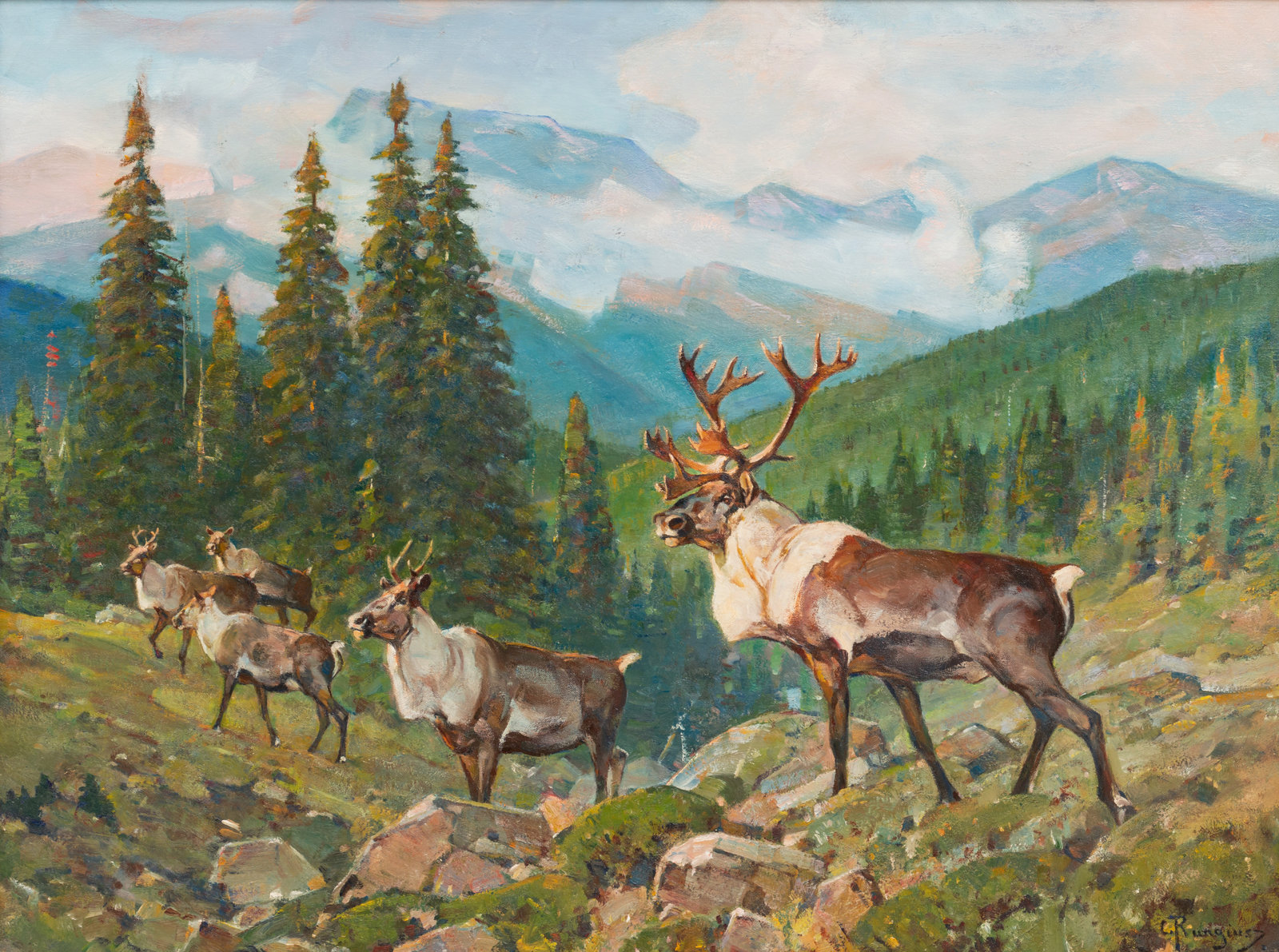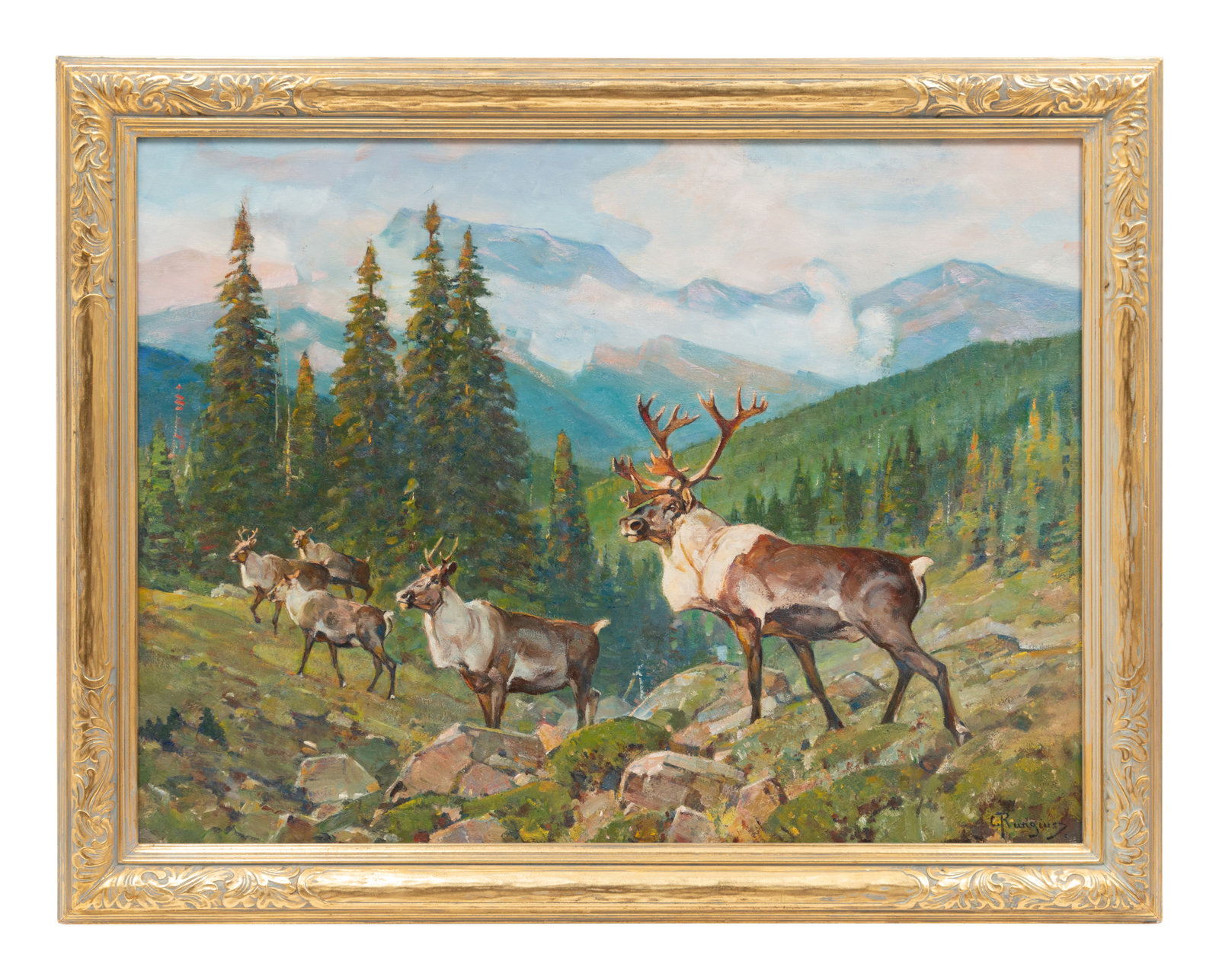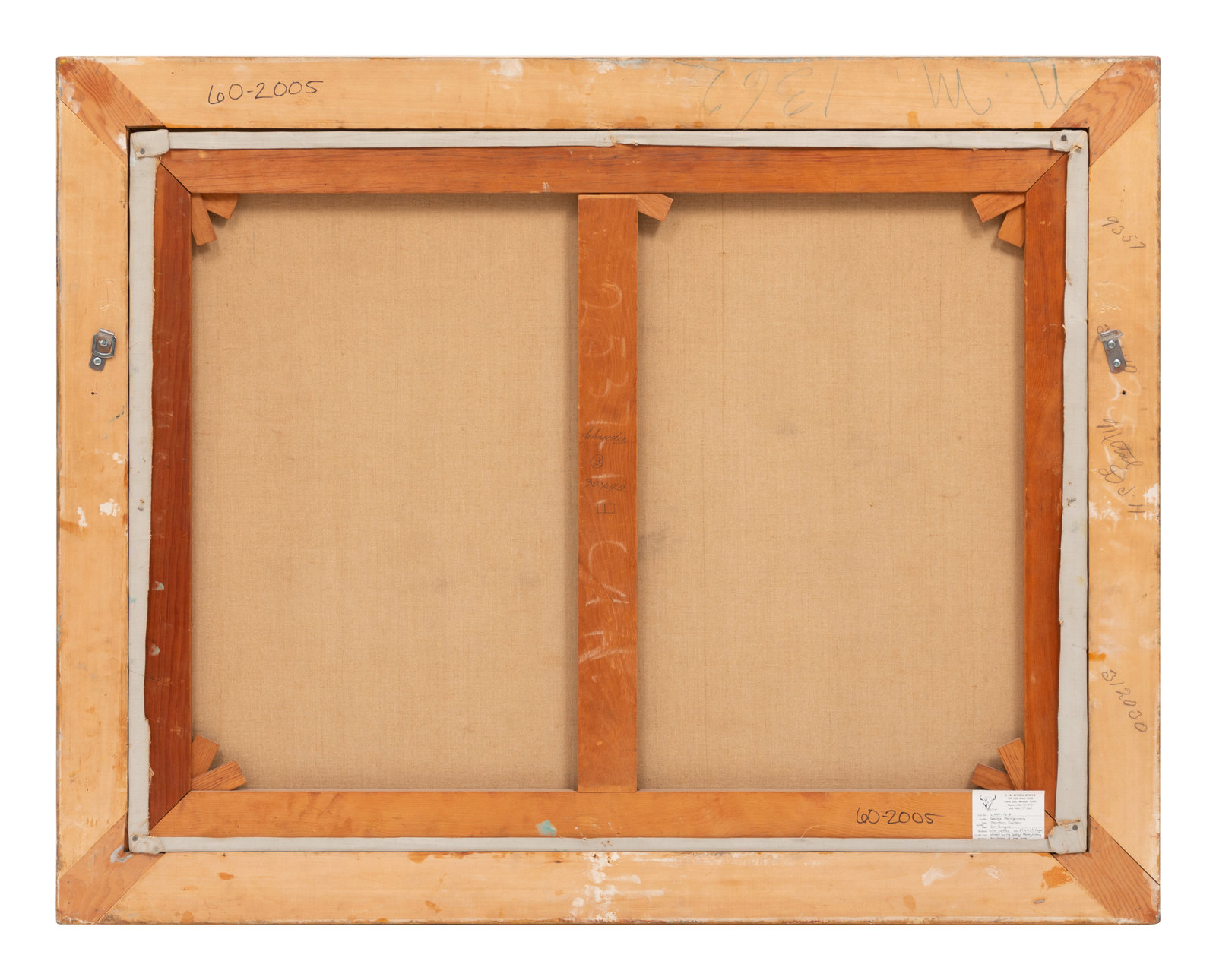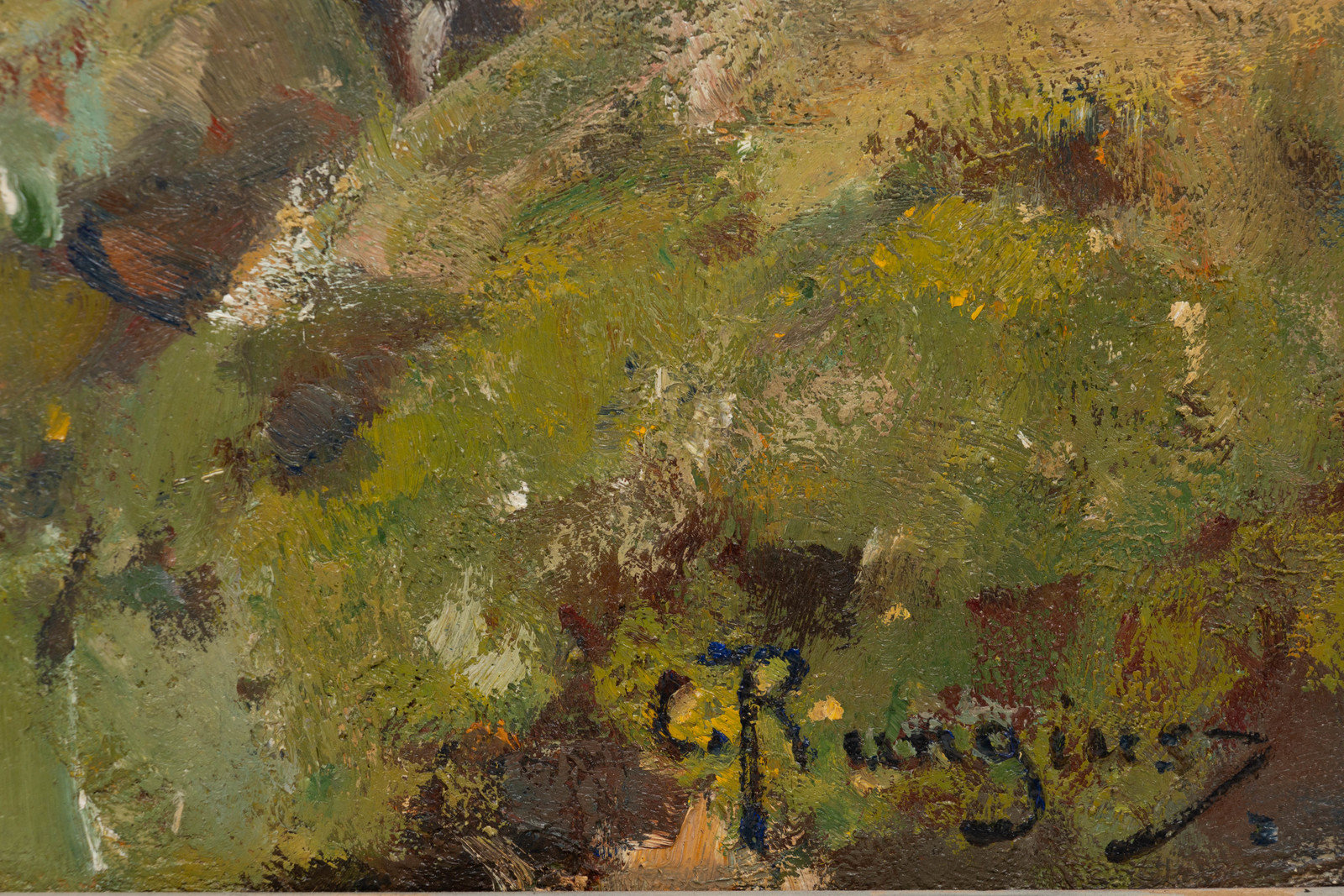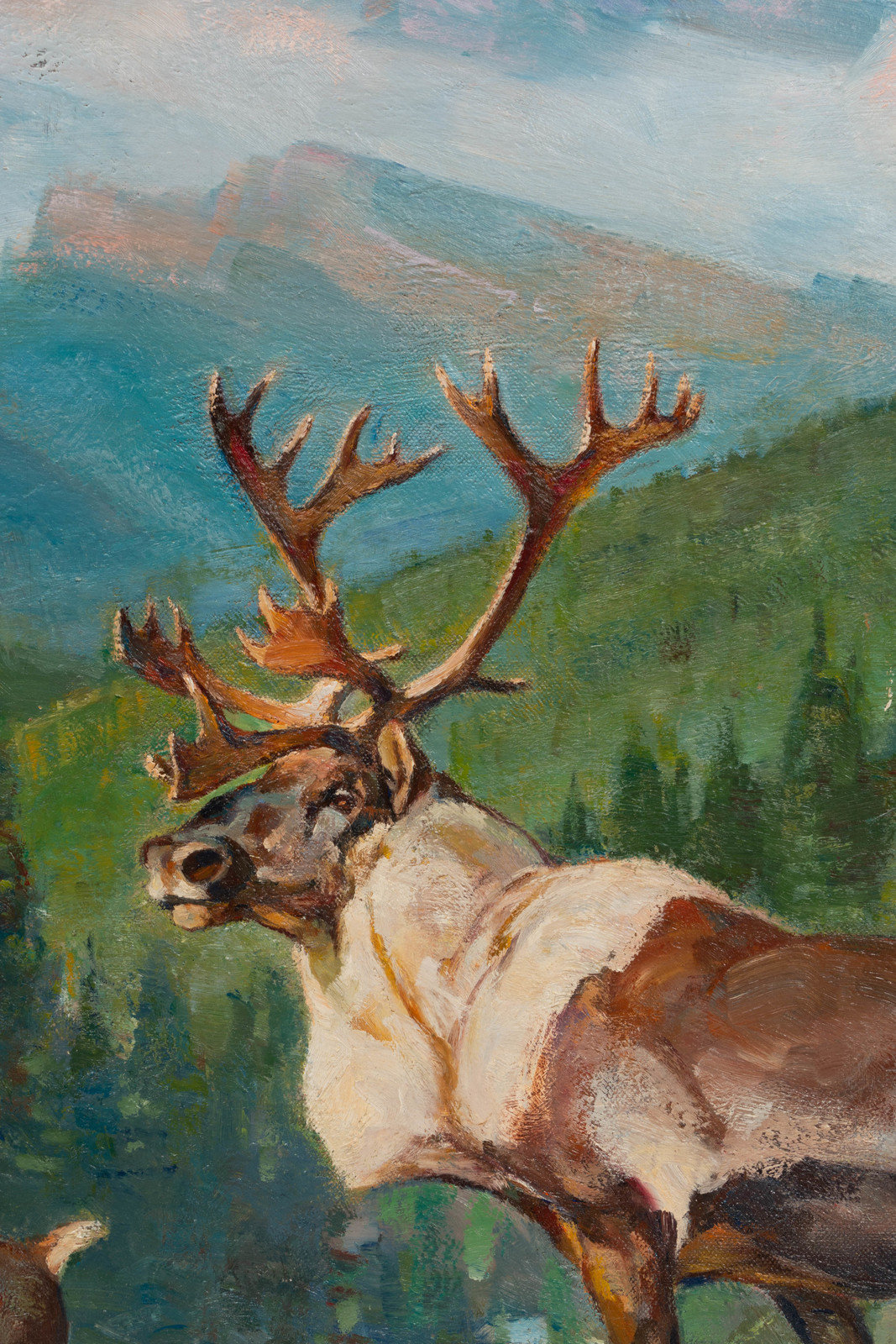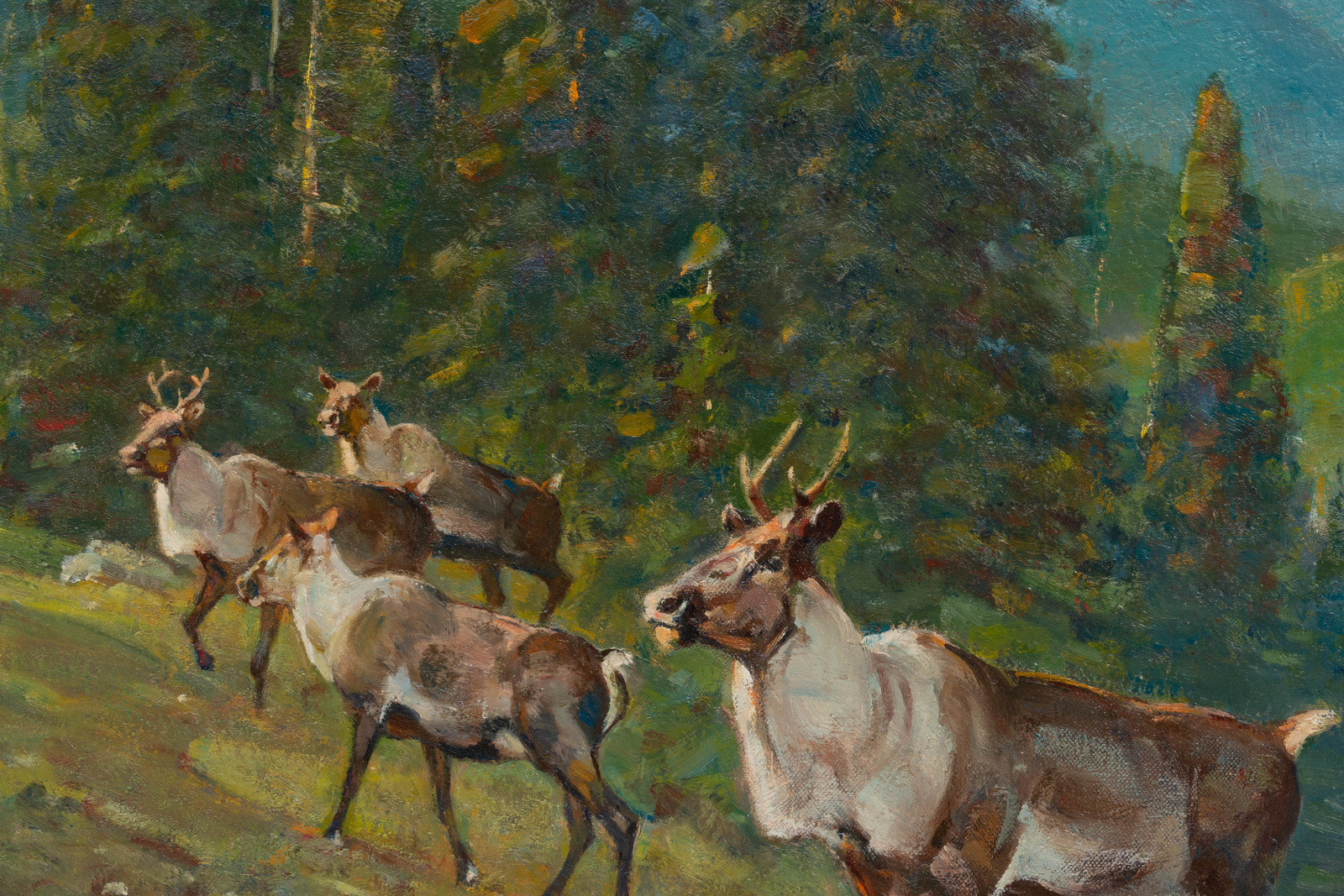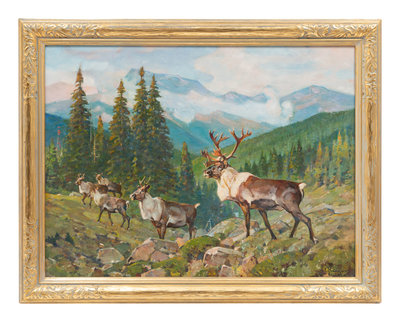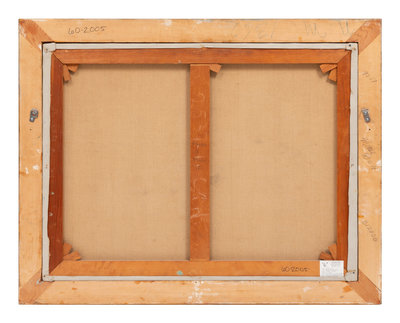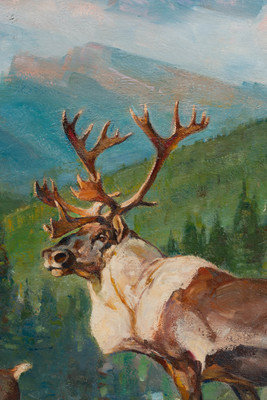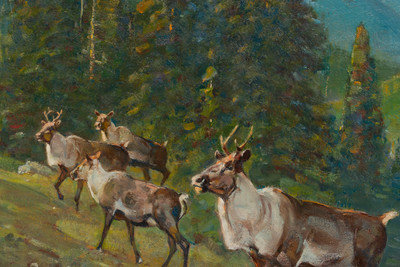Carl Clemens Moritz Rungius
(American, 1869-1959)
Mountain Caribou
Sale 951 - Western Art, including Contemporary Native American
Nov 4, 2021
10:00AM MT
Live / Denver
Estimate
$200,000 -
$300,000
Sold for $368,750
Sold prices are inclusive of Buyer’s Premium
Lot Description
Carl Clemens Moritz Rungius
(American, 1869-1959)
Mountain Caribou
oil on canvas
signed C. Rungius (lower right)
30 x 40 inches
Property from Palm Springs Art Museum Sold to Support the Care of Collections and the George Montgomery Fund for Acquisitions
Provenance:
Gift of the George Montgomery Trust to Palm Springs Art Museum
Widely recognized as the premier painter of North American wildlife, Carl Rungius was born in Germany in 1869 and classically trained at the Royal Academy of Arts in Berlin. At the Academy, he specialized in animal art, often sketching inhabitants at the zoo. Rungius first traveled to the United States in 1894 to accompany his uncle on a Maine moose hunt. After the hunt, he decided to remain in the States. He soon found the opportunity to travel to Wyoming’s fabled Wind River Range in 1895.
Rungius was amazed at the beauty of the rugged range and at the abundance of wildlife. Over the next fifteen years, he visited The Winds repeatedly in the summer and fall to explore, hunt, and sketch. Winters were spent in New York City, where he created finished canvases using an increasingly large collection of field studies and research material generated during his annual excursions. In New York, Rungius met leading figures in the burgeoning world of conservation, including Theodore Roosevelt and William Temple Hornaday, head of the New York Zoological Society. These luminaries lauded Rungius’s unparalleled talent and helped him create valuable connections that would lead him even farther into the field.
One such connection was naturalist Charles Sheldon, who invited Rungius on a four-month long expedition to the Yukon in 1904. In the Yukon, Rungius saw multiple caribou in the wild. He saw even more caribou after 1910, when he started traveling to Banff, in Alberta, Canada, for the summer and fall seasons. At this point, caribou begin to appear regularly in his work. Banff became a second home to Rungius, where he eventually built a house and studio, dubbed The Paintbox. He returned to Banff almost every year until his death in 1959. In Carl Rungius: Painter of the Western Wilderness, authors Jon Whyte and E. J. Hart noted that Sheldon said, “Caribou are pigs!” meaning they were not the most exciting game to hunt. However, Rungius appreciated their intricate antlers and bold coloration, finding them perfect subjects to paint.
Mountain Caribou shows Rungius’s strong sense of design coupled with his knowledge of anatomy born of years of experience in the field. Mountain Caribou, as a species, prefer forested areas and once ranged into Washington and Idaho, but now exist mainly north of the Canadian border. In this painting, Rungius sets the caribou in a clearing amidst a beautiful pine forest, an apt depiction of their habitat. He adds a few boulders in the foreground, one of his signature elements. Misty mountains in the background complete the picture.
- Adam Duncan Harris, Ph.D.
- Adam Duncan Harris, Ph.D.
Grainger/Kerr Director of the Carl Rungius Catalogue Raisonné, an Independent Project of the National Museum of Wildlife Art
Condition Report
Appears in overall good condition. One small area of impact crackle, approximately 1/2 x 1 inch, 6 inches from right edge near center line. Another two faint lines of craquelure running vertically near center. UV light does not reveal any additional damages, losses, repairs or inpainting. Please request additional images. Framed dimensions: 36 1/4 x 46 1/4 inches
The physical condition of lots in our auctions can vary due to
age, normal wear and tear, previous damage, and
restoration/repair. All lots are sold "AS IS," in the condition
they are in at the time of the auction, and we and the seller make
no representation or warranty and assume no liability of any kind
as to a lot's condition. Any reference to condition in a catalogue
description or a condition report shall not amount to a full
accounting of condition. Condition reports prepared by Hindman
staff are provided as a convenience and may be requested from the
Department prior to bidding.
The absence of a posted condition report on the Hindman website or
in our catalogues should not be interpreted as commentary on an
item's condition. Prospective buyers are responsible for
inspecting a lot or sending their agent or conservator to inspect
the lot on their behalf, and for ensuring that they have
requested, received and understood any condition report provided
by Hindman.
Please email conditionreports@hindmanauctions.com for any additional information or questions you may have regarding this lot.
